Happy New Year from our office staff at aiglabs.com and our families, to you and your family!! We look forward to seeing you in the New Year.
Gemological Laboratory: Field Gemologists, & Field Research Gemologists
Wednesday, December 31, 2014
Tuesday, December 30, 2014
Astronaut Mark Kelly Talks Breitling Watches,
& Aviation at Historic New York Explorers Club
Guests including staff members from American International Gemologists www.aiglabs.com had the exclusive
opportunity to witness an intimate conversation between Kelly and adventure journalist
Jim Clash on the importance of timekeeping throughout his many missions,the
future of space travel and his favorite timepieces from the brand. Guests also had a
chance to meet with Kelly, while viewing the latest pieces from Breitling, including
the Breitling Cockpit B50, and enjoy the Explorers Club during the private event.
“After
wearing a Breitling on three of my four NASA flights, I know that I can count on them
to be precise, functional and durable. I just don’t think you can find a better watch.” said Mark Kelly, “It was also amazing
to get a chance to be in the Explorers Club,
because it is filled with such rich history and has seen so many incredible explorers
come through its doors.”
With
6,000 flight hours in more than 50 different aircraft, 375 aircraft carrier
landings, 39
combat missions and more than 50 days in space, Mark Kelly is one of our
country's most experienced
pilots.
Guests
also had a chance to see the Cockpit B50, which is distinguished by its
exclusive new
Breitling Caliber B50, a SuperQuartz™ movement ten times more accurate than
standard quartz
and chronometer-certified by the COSC (Swiss Official Chronometer Testing
Institute), the
highest benchmark in terms of reliability and precision. Additional functions
include split-time
and fly back capabilities, as well as a second time zone display, a perpetual calendar,
two alarms in buzzer and/or vibrate mode, a lap timer function and a countdown complete
with alarm. Another special feature is its use of UTC (Coordinated Universal
Time, the
aviation reference time) as the time base, which enables the Cockpit B50 to
ensure smooth juggling
with time zones. Breitling has developed an innovative miniaturized
rechargeable battery
system; charging can be done via the electricity grid or through a USB port on
a computer.
The Cockpit B50 also has an ultra-readable display - the two white-on-black
liquid crystal
(LCD) screens are equipped with a unique backlighting system that offers four
levels of
brightness and is activated by pressing in the crown or by tilting the wrist.
Breitling
USA President Thierry Prissert with Mark Kelly
BREITLING
COCKPIT B50
ABOUT
BREITLING : Léon Breitling founded the company in 1884 in St. Imier,
Switzerland.
Breitling
is the world’s only major watch brand to equip all its models with
chronometer-certified
movements, the ultimate token of precision.
With its manufacture of the Caliber 01, Breitling has
created the most reliable and accurate of all
self-winding chronograph movements, its quality
guaranteed
by an unprecedented five-year warranty offered on all pieces equipped with the
in-house
movement. The chronographs are produced
entirely by Breitling in their own workshops, and are
chronometer
certified by the Swiss Official Chronometer Testing Institute (COSC). This
amazing
accomplishment
has further established Breitling as the absolute benchmark in the field of
mechanical
chronographs. Breitling is one of very few companies to produce, develop and
manufacture
their own mechanical chronograph movement in-house. This family business is
also
one of
the last remaining independent Swiss watch brands.
Tuesday, December 23, 2014
Saturday, December 20, 2014
Rock From Russia Contains 30,000 Diamonds
Rock From Russia Contains 30,000 Diamonds | IFLScience
 The micro-diamonds were between 100 and 700 micrometers in size, and many of them occurred in clusters. With millions of carats per ton, this is the absolute highest yield of diamonds ever in a mantle xenolith, the researchers write. Typical diamond ore averages between 1 to 6 carats per ton (a carat is about a fifth of a gram). But being so tiny, these diamonds weren’t worth much as jewelry.
The micro-diamonds were between 100 and 700 micrometers in size, and many of them occurred in clusters. With millions of carats per ton, this is the absolute highest yield of diamonds ever in a mantle xenolith, the researchers write. Typical diamond ore averages between 1 to 6 carats per ton (a carat is about a fifth of a gram). But being so tiny, these diamonds weren’t worth much as jewelry.
Researchers have unveiled a strange ornament-sized rock from near the Arctic that’s red and green and comprised of diamonds. Nearly 30,000 colorless micro-diamonds, to be exact. American International Gemologists, aiglabs.com was at the American Geophysical Union fall meeting in San Francisco, where the findings were presented this week.
The 30-millimeter, 10.5-gram rock was a donation to science from the owners of Siberia’s Udachnaya diamond mine, which is dominated by volcanic xenoliths (Greek for “foreign rock”) with a few precious “diamondiferous” ones. Among these was a unique diamondiferous xenolith with garnet and olivine to give it those Christmas hues. A team of researchers from the U.S., Germany, and the Siberian Branch of the Russian Academy of Sciences created 2D and 3D images of the strange rock using high-resolution X-ray computed tomography (which is similar to a medical CT scan). These images revealed the relative abundance of its various mineral parts, and diamonds made up 9.5 percent by volume.
 The micro-diamonds were between 100 and 700 micrometers in size, and many of them occurred in clusters. With millions of carats per ton, this is the absolute highest yield of diamonds ever in a mantle xenolith, the researchers write. Typical diamond ore averages between 1 to 6 carats per ton (a carat is about a fifth of a gram). But being so tiny, these diamonds weren’t worth much as jewelry.
The micro-diamonds were between 100 and 700 micrometers in size, and many of them occurred in clusters. With millions of carats per ton, this is the absolute highest yield of diamonds ever in a mantle xenolith, the researchers write. Typical diamond ore averages between 1 to 6 carats per ton (a carat is about a fifth of a gram). But being so tiny, these diamonds weren’t worth much as jewelry.
"The exciting thing for me is there are 30,000 itty-bitty, perfect octahedrons, and not one big diamond," Lawrence Taylor from the University of Tennessee said at the conference. "It's like they formed instantaneously. This rock is a strange one indeed."
Their isotopic carbon concentration suggests that the diamonds come from oceanic crust that was forced deep inside the Earth with the movements of tectonic plates. They likely crystallized from fluids that escaped from subducted crust, Live Science explains.
The chemical reactions that create diamonds are still a bit of an enigma, Taylor tells Live Science. Scientists think they originate in the mantle under crushing pressure, then erupt to the surface during explosive volcanic activities. The process typically destroys a lot of the mantle rocks, but this one somehow survived the trip up.
The work will be published in Russian Geology and Geophysics next month. AIG Appraisal will bring it to you once it is published.
Thursday, December 18, 2014
8 Things We're Going to Do as Soon as We're Able to Go to Cuba
A street scene in Havana
On Wednesday, President Obama rocked the travel world, announcing the easing of 53 years of sanctions against Cuba and the start of talks that may usher in a new era of U.S. relations with the once-forbidden Caribbean island. The Twitter-sphere started smoking immediately— over the prospect of legal Cuban cigars. As Sylvain Galineau tweeted: “Diplomatic relations: what everyone heard was ‘Cuban Cigars.’”
Some experts say that we shouldn’t be lighting our stogies in celebration just yet. “The lifting of the embargo will not mean the island will be suddenly open to tourism,” says travel advisor Eric Sheets of Latin Exursions. But we couldn’t help but get excited.
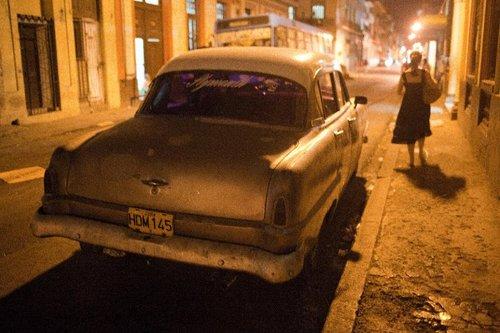
Exploring Havana (Photo: Jonathan Bloom)
Mind you, it’s still possible to go now. In 2012 alone, more than 100,000 U.S. travelers legally visited the island, according to Sheets. American International Gemologists visited the island in 2004. “Cuba is already a top destination in the Caribbean and has more arrivals than Ecuador, New Zealand, and even Costa Rica.”
But the government limits how Americans can see the island by restricting them to highly supervised people-to-people trips through companies like Geographic Expeditions. ”The idea has been that U.S. tourists will act as cultural ambassadors to Cuba by meeting with experts and everyday people,” says Jennine Cohen, managing director of Latin America for Geographic Expeditions.

Along the Malecón in Havana
While you get to see a deeper side of Cuba by meeting architects and economists and dance performers, the downside of these trips is that travelers are not allowed to go off the beaten path. So the prospect of freely being able to come and go and wander the streets of Havana unchaperoned makes us swoon.
Here are eight things we’re going to do as soon as we’re able to go to Cuba with no restrictions.
Relax on Cuba’s Pristine Beaches
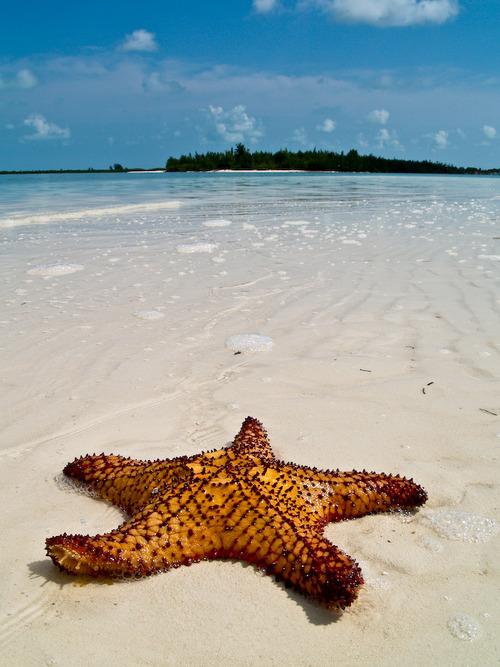
Playa de las Estrellas del Mar, also known as “Starfish Beach” (Topyti/Flickr)
According to Cohen of Geographic Expeditions, the biggest request her company gets is from travelers who are looking to go to the beach, which isn’t allowed on people-to-people trips. What they are missing out on are gorgeous white-sand beaches set alongside the neon blue Caribbean sea. One of our favorite spots is the pristine Playa Ancón, minutes from the colonial city of Trinidad. Another discovery is Playa de las Estrellas del Mar, or “Starfish Beach” because it is lined with starfish. If you want to get adventurous, you can go for a swim in the famous Bay of Pigs.
Get Adventurous in Viñales
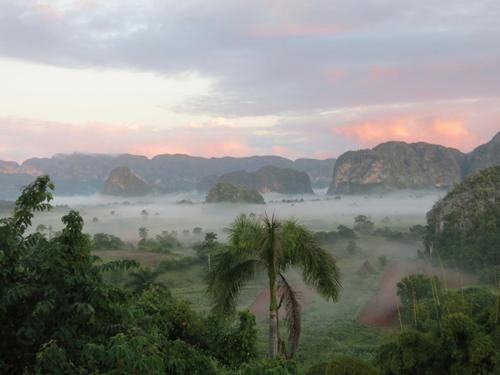
The Viñales Valley (Thinkstock)
Also off limits to U.S. travelers: adventure travel, since people-to-people trips are highly focused on meeting people. And when the island opens up, be prepared for the adventurers to rush in. The lush Valle de Viñales is a national park and a World Heritage Site best known for its cigar-making industry. But adventure travelers love it, too, for its rock climbing on sheer 1,000-foot limestone faces, with stalactites hanging above. Interestingly, some people-to-people trips allow opportunities to go birding, also a hallmark of Viñales.
Puff on a Cigar — Legally
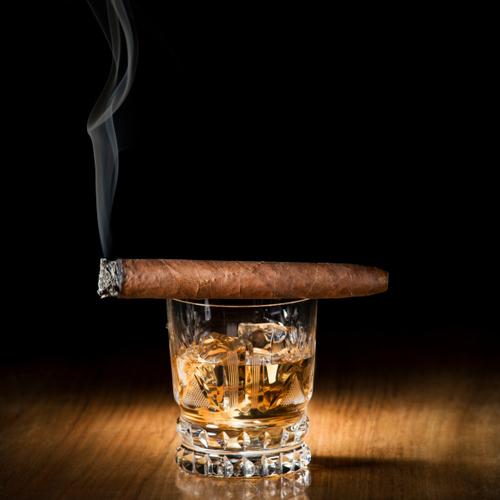
A stogie and a sip (Thinkstock)
Did we mention that we’re beside ourselves over the prospect of being able to bring Cuban cigars back to the U.S.? Banned since the embargo started, the mighty Cuban cigar is worshipped the world over. Now American travelers will be allowed to come home with $100 worth of tobacco and alcohol products. So that’s good for our rum consumption, too. Cuba Libre, anyone?
Hitch a Ride in a Classic Car in Havana

Vintage American cars in Havana
The dilapidated streets of Havana are lined with perfectly preserved cars of yesteryear — it's like being in a time warp. Many of them operate like illegal jitneys, roaming the streets and picking up multiple passengers along the way. Or if you prefer, Old Car Tours will take you for a convertible ride around the city in a vintage Buick or a Dodge that your grandfather might have driven back in the day.
Listen to Cuban Music on the Streets of Trinidad
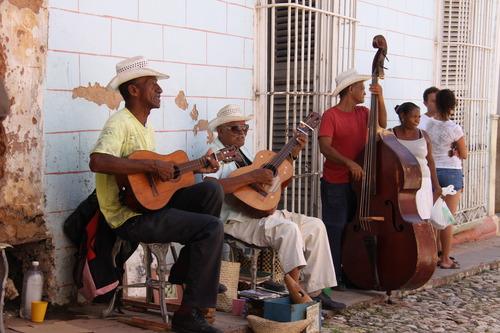
Musicians on the streets of Trinidad (Matteo Artizzu/Flickr)
Wherever you go in Cuba, it’s hard to escape the lilting soundtrack of the Buena Vista Social Club. Santiago de Cubais known as the musical capital of the island. But there’s nothing like sitting on the steps of the main church in the cobblestoned town of Trindad, listening to a local band performing “Chan Chan.”
Dine at an Under-the-Radar Restaurant in Havana

The paladar La Guarida (Photo: La Guarida)
It used to be that everyone in Cuba had to eat in government restaurants that served sad Soviet-era ropa vieja (pulled meat) and potatoes. So an industry of illegal paladares sprung up in private homes and deserted buildings, serving much more ambitious dishes. The word "paladar" came from a Brazilian soap opera shown in Cuba in the early 1990s and is Portuguese and Spanish for “palate.” They’re now legal in Cuba, but there’s still an air of mystery around them. One of the most famous is La Guarida, set in a beautifully decaying building that was featured in the movie Strawberry and Chocolate. This is where Jay Z and Beyonce recently spent their fifth anniversary, dining on black beans and rice.
Walk in the Footsteps of Hemingway

Hemingway’s house (Tony Hisgett/Flickr)
Ernest Hemingway’s legend still looms large in Cuba. He first visited in 1928 and became enchanted with the island, eventually moving there and writing many of his best-loved books, including The Old Man and the Sea, A Moveable Feast, and Islands in the Stream. Today, you can visit his former home, Finca Vigía, in a beachside town near Havana. It has been converted into a museum that is filled with his books and keepsakes. And in Havana, one of his favorite bars, La Floridita, still serves the daiquiris that he so loved (though they also make a mean mojito).
Watch Showgirls at the Tropicana
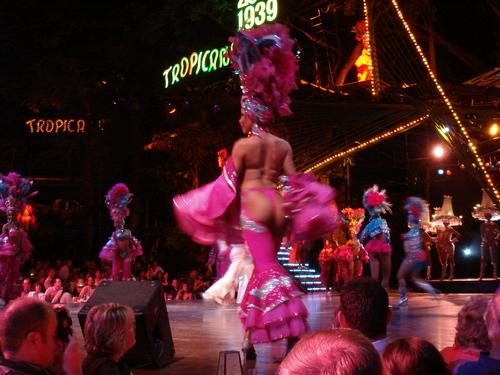
Strutting their stuff at the Tropicana (Atushi Masegi/Flickr)
We debated whether to include this one because it’s so tacky and touristy, but you just have to visit the legendary Tropicana. The open-air Havana nightclub is the stuff of legend. It was featured in Graham Greene’s 1958 book Our Man in Havana and little has changed since.

A few of our favorite things in Cuba (Photo: Thinkstock)
Now What?
And yet, all of this is still at least six months to a year off, according to experts — who also predict that the island will change fast once Cuba's doors are totally open to tourists and travel companies. So, listen to Geographic Expeditions’ Jennine Cohen, who advises: “All those plans to go to Europe? Put those off. This is the year to go to Cuba. It will still be a special destination, but it will soon be a different one.”
Wednesday, December 17, 2014
A diamond’s shape is often the very first consideration when selecting a piece of diamond jewelry. It’s quite clear why: each shape has its own attributes and offers a different aesthetic. Because of the wide variety of diamond shapes available, it’s important to zero in on the shape that works best for you. Today’s installment of GIA’s holiday buying guide series offer a few tips to help you pick the perfect diamond shape.
Diamond shape is regularly confused with diamond cut. However, these two are not one and the same. A diamond’s cut and crafted finish refers to the stone’s facet arrangement, including symmetry and proportion. On the other hand, a diamond’s shape is the general silhouette of the stone: round, square, rectangle, octagonal, oval, marquise, pear, heart, or triangle. Looking at diamonds, shape by shape, is the best way to compare their distinctive qualities and see which one is right for you or as a gift.
Style and Personality
A diamond’s shape can reflect your style and personality. You’ll want to look at and wear these precious jewelry pieces with confidence over the years. Get to know the facts behind each shape to choose the one that’s right for you. For instance, if you love tradition and are drawn to classic timeless fashions, then a round diamond might be for you. When cut as a round brilliant, the diamond’s 58 facets deliver unbelievable sparkle. It’s a shape that’s both versatile and flattering whether the diamond occupies center stage in solitaire engagement ring, as a pendant, or paired with a mate in a set of diamond earring studs.
If your personal style is active and athletic, and you’re drawn to a square shape diamond, then you'll want to keep in mind that this diamond shape features pointed corners which should be protected by prongs. Courtesy of American International Gemologists.
Each shape offers different benefits, depending on design preference and lifestyle. Round continues to be the most popular diamond shape and appears most frequently in solitaire engagement rings. To learn more about each cut’s individual benefits and ideal proportions, consult Tips for Purchasing Fancy Cut Diamonds andWhat is a diamond solitaire setting?
Diamond Shapes for a Vintage Look
Are you an eternal romantic, perhaps drawn to all things Victorian? What about a squarish diamond shape that recalls the nineteenth century “old mine cut”? As you can imagine, diamond cutting was a slow process back then and vintage diamond cuts from that period are known for their distinct appearance.
The octagonal shaped diamond was born during the machine age and the Art Deco period. This shape is a perfect choice whether your style is ultra-modern or old Hollywood glam. We see this shape most often as an emerald cut, with its smooth mirror-like look. It takes a diamond of high quality to pull this off well, so no wonder it was the shape and cut of choice for the engagement ring Brad Pitt designed for Angelica Jolie.
With this information at your fingertips, you are sure to get the most out of your diamond buying experience. Want to know more? How diamonds shape up is an insightful guide to the history behind each diamond shape. Find the one that is perfect for you.
Sunday, November 30, 2014
AIG Appraisal.... Extractives Partnership between the USA and Guinea Conakry
Rough Diamond Buying Group;
American International Gemologists
Impression
Guinea
Conakry has a population of just over eleven million in an area the size of the
State of Oregon. It is the world's
largest producer of bauxite and is about to be the world’s third largest
producer of iron ore. Emergent mineral resources include: limestone, manganese,
nickel and uranium. Guinea's mining sector generates almost 80% of overall
export earnings and 26% of GDP.
In early
July 2014 Guinea was accepted as 'EITI
Compliant' by the international Extractive Industries Transparency
Initiative at its meeting in Mexico City. At the meeting chaired by Clare
Short, she congratulated Guinea for its sustained commitment & leadership
in the implementation of EITI.
As a
country implementing the EITI, Guinea must regularly disclose the government's
revenues from natural resources. Compliance necessitates that the country meets
each and every requirements of the EITI Standard. This standard was adopted in
2013.
Cheick
Kante; Country manager for "The World Bank in Guinea also congratulated
Guinea on achieving EITI Compliant status after many years of hard work.
This now
brings us to Diamonds; Guinea is also an important source of alluvial, artisanally mined diamonds. In 2011 Guinea produced a little over 300,000 carats,
worth approximately $30 million US dollars.
Diamond mining is the one mineral resource
that that can be mined by individuals, by family’s, and by small local groups
known as Artisans. Guinea hosts quite a few known diamond producing areas, and
exploration is ongoing for additional primary kimberlitic source rocks for
diamonds. Guinea joined the Kimberley
Process Certification Scheme (KPCS) for rough diamonds in 2003. The KPCS was
established to certify that the proceeds from the sale of rough diamonds does
not finance rebel groups in their quest to destabilize legitimate governments.
The
KPCS, in 2009, requested an assessment of Guinea's diamond deposits to
determine a realistic production range, and required Guinea to strengthen
internal controls on their diamond exports has significantly improved in
accuracy and in its overall controls.
However,
data gaps, uneven implementation, limited technical capacity & regulatory
insufficiencies in the artisanal mining sector continue, and Guinea remains a
reported transit point for conflict diamonds from neighboring countries to
international markets. These challenges threaten the credibility of Guinea's
enforcement of the Kimberley Process Certification Scheme.
Transparency
will reduce the threat of corruption, and can help the locals to hold
government officials accountable for spending natural resource revenues.
The KPCS
includes nineteen African Participants: Angola, Botswana, Cameroon, Central
African Republic, Congo, Democratic Republic of the Congo, Cote d'Ivoire,
Ghana, Guinea, Lesotho, Liberia,
Mauritius, Namibia, Sierra Leone, South Africa, Swaziland, Tanzania Togo &
Zimbabwe.
Norman
Monteau
Friday, November 28, 2014
Wednesday, November 26, 2014
Saturday, November 22, 2014
Thursday, November 20, 2014
Tuesday, November 18, 2014
Friday, November 14, 2014
 |
We recently sent an
Alexandrite in to GIA http://www.gia.edu/gem-lab-service/colored-stone.
Very Nice Color Change! #aig_appraisal,
#aiglabs_appraisal
|
Tuesday, July 8, 2014
The
New Rolex Cellini Wrist Watches Unveiled at Baselworld 2014
AIG
Appraisal: Think of the Cellini as a formal wristwatch, one that you might wear
with a Tuxedo. The perplexing Cellini (yes, I said perplexing) has been around for
a long time, but really never caught on. Here at aiglabs.com we have been appraising Rolex Cellini’s for over fifteen years. I don’t usually
get excited over new versions of a watch. Something though is different about this
new collection.
In Messe
Basel, Switzerland at Baselworld 2014;
Rolex unveiled the new Cellini line. Talk about raising the bar. I don’t remember
where the bar was, but this collection is way above the bar. The new collection
features a classical look, with a very unique design.
There
are three models in the new Cellini collection; an automatic time only, an
automatic with date, and an automatic with second time zone with day and night
function. They share the same 39mm case, available in either 18KT white gold or
18KT Everose gold. Unlike previous Cellini’s, these watches are all water resistant
to 50 meters/160 feet. Each watch is completed by an 18KT gold Rolex buckle,
and a black or brown alligator leather strap.
At first
glance the watches do not appear to be Rolex, but the new Cellini’s feature
several details synonymous with Rolex. Each watch has the unique Rolex crown, domed
case back with the Rolex fluted rim. The
two tiered bezel combines the bezel styles of the DateJust, a lower fluted portion
and an upper domed ring.
All three
have chronometer certified; thirty one jewel, automatic mechanical movements, with
40 hour power reserve, manufactured entirely by Rolex.
The base
model of the new Cellini line is the Time, (on the left in the photo) which comes
with either a Black or White lacquered dial, elongated Roman numerals, applied
baton indices and traditional 'dauphine' hands. The movement is a Rolex
automatic (now that’s an upgrade) with the non-magnetic Blue Parachrom Hairspring.
Next is
the Cellini Date (in the middle of the photo) model. In Black or White, the
dial is decorated with rayon
flammé de la gloire (French, don’t you just love it) guilloche, a
sunburst motif. It has a date sub-dial at the three o'clock position.
The last
model (on the right in the photo) is the Cellini Dual Time. This model also has
a rayon
flammé de la gloire guilloche dial that you can get in either Black or
White. The Cellini Dual Time has a second time zone as well as a home time
display in the sub-dial at the six o'clock position. A small window at the 45
minute mark of the sub-dial indicates day or night. The local time hour hand can
be adjusted in one hour increments.
With the
name Cellini, Rolex is paying homage to Benvenuto Cellini, the (16th
Century) Renaissance goldsmith and sculptor to the Pope. I think that Benvenuto
(Benvenuto, can I call you Benvenuto) would be proud of the new watches.
Pre-Sale
Estimated Retail pricing will range from $18,000US for the Cellini Time to $23,000US
for the Dual Time.
Monday, July 7, 2014
The Two Day Marine Chronometer from HMS Beagle, the Survey Ship that took Charles Darwin on the voyage to the Galapagos Islands.
Darwin’s
five year journey on the HMS Beagle is legendary after Darwin wrote about his
experiences in the five part series “The Zoology of the Voyage of HMS Beagle” published between 1838 and 1843, and in “On the Origin
of Species published in 1859.
Saturday, July 5, 2014
Is
the World still trading in Blood Diamonds from the Central African Republic?
AIG Appraisal:
Diamonds from the Central African Republic (CAR) are reaching international
markets despite the fact that trading in rough diamonds from the CAR was suspended
by the Kimberley Process in May 2013.
The Kimberly Process http://www.kimberleyprocess.com/ instituted a temporary ban on trading in rough diamonds from the Central African Republic after the Séléka Rebel groups overthrew President François Bozizé, using rough diamond sales from the country’s alluvial mining to fund their operations.
The Séléka
Rebels have controlled diamond producing areas in the north since 2010; but now;
even after losing in control of the government, they are still in control of
large parts of the Central African Republic (CAR). This could become a real
challenge to the Kimberley Process stopping the trade of "Blood Diamonds."
The Kimberley Process suspension will remain in place until a review mission to the Central African Republic (CAR) can be carried out, which right now is highly doubtful due to the country’s civil war. Diamond mining along the Boungou River tributaries in the Central African Republic (CAR) are reaching the international marketplace by cross border smugglers into neighboring countries.
World
Diamond Council Alert:
The
latest report from Belgium: authorities seized rough diamonds that match the production
footprint of rough diamonds mined in the Central African Republic (CAR). The World
Diamond Council (WDC) said any person or company caught trading in rough diamonds
from the Central African Republic (CAR) will be subject to sanctions agreed
upon by the WDC. World Federation of
Diamond Bourses (WFDB) President Ernie Blom said in an interview that members
can be suspended or expelled when caught trading in Conflict Diamonds.
Diamantaire
Edward Asscher; the President of the WDC; said in a recent interview; that trading
in Conflict Diamonds from the Central African Republic (CAR) undermines the efforts of the country’s
efforts to restore peace, and challenges
the Kimberley Process’s ability to eliminate the trade in conflict diamonds.
Isn't it
interesting that in interview after interview; no one will use the phrase Blood
Diamonds, even that phrase is now sanitized, buffed, polished, and changed to Conflict Free
Diamonds.
The
basic idea of the Kimberley Processes to ensure that consumers can buy verified Conflict
Free diamonds. Tracing a diamonds origin in geology that is similar in all of the
diamond producing countries in West Africa can be difficult. The Kimberley
Process is trying to implement a system dependent on good governance in countries
where there is no good governance, countries like Angola, Zimbabwe and the
Central African Republic. Can the blood in these conflicts, like the conflict
in the Central African Republic be stopped? It will not be as easy as it is to change
the phrase Blood Diamonds to Conflict Free Diamonds.
Subscribe to:
Comments (Atom)















